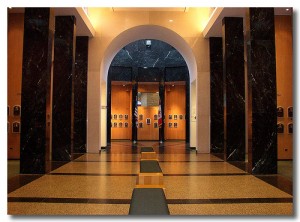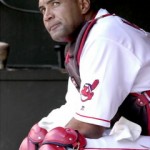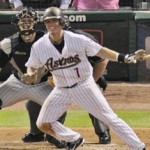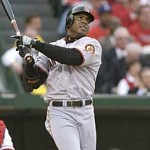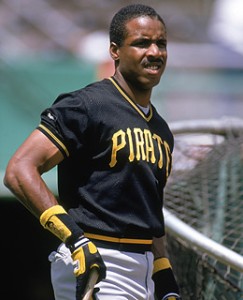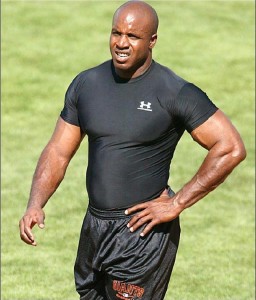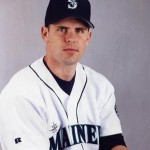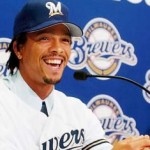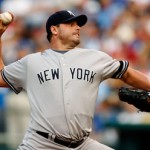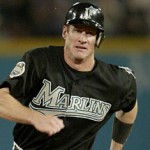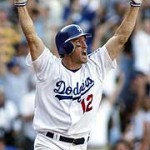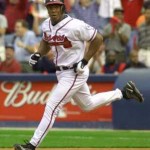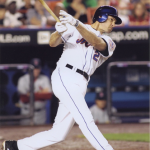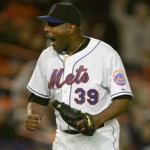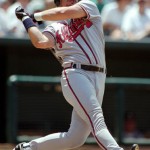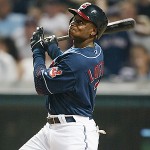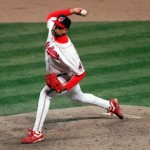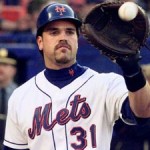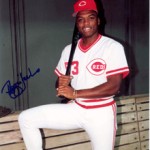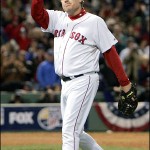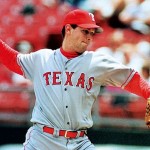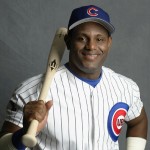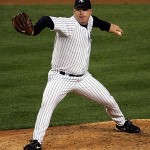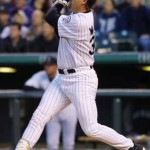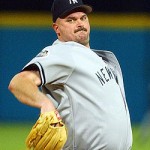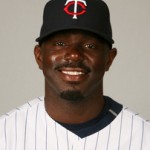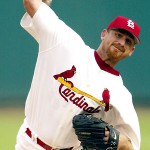A good portion of my reasoning for breaking down the Hall of Fame ballot this year (beyond providing reasonable analysis for all twenty of our devoted Recorder readers) is strongly driven by nostalgia. Ballots from the past years have slowly started featuring the players that I identified with growing up (Barry Larkin! Barry Larkin! Barry Larkin!), and when I look over the names appearing on this ballot for the first time, the realization strikes me that I was up in arms about every single one of the players for one reason or another. Whether it was making cracks about Julio Franco’s age while he was still producing at a reasonable clip for the Braves or wondering exactly how many Flintstone’s Vitamins I would have needed to take to look like Sammy Sosa (Answer: All of them, only replace chewable vitamins with testosterone pills shaped like Dino the Dinosaur.), these are the players of my youth, and a sign that we are all sure as shootin’ getting older. Call it the Boys of Summer Effect.
Which is why the fact that these are the ballots the Steroid Era is mildly upsetting to me.
I openly concede that I am not in a position to make an ethical ruling on the use of steroids in the game in the 1990’s. Was it cheating to gain a competitive advantage? Yes. Was it widespread among the league? Yes. Were some of the performance enhancers not only legal, but encouraged? Yes. Were greenies and amphetamines openly placed in bowls in clubhouses for ingestion by the players? Yes. Did this help some players break hallowed records of the sport? Yes. Didn’t Ty Cobb file his spikes and openly attack players in order to gain an advantage? Only all the time. Didn’t Gaylord Perry throw illegal spitballs on his way to 300 wins and the Hall of Fame? Yes.
So, from a historical perspective, one might say that steroids are just a new version of the same old thing.
At the same time…
Analyzing the Hall of Fame ballot should be a simple task. Was this player one of the best of his era? Did he/she truly make a contribution to the sport? Did he/she achieve things formerly unseen on the baseball field? Do we remember them fondly or with abject terror because of their competitive spirit?
My generation’s childhood heroes have the added question: did they take steroids? In essence, a portion of the innocence of the ballot has been lost. Granted, we’re talking about a sport that openly excluded non-white players for the first sixty-plus years of its existence, so the application of the term ‘innocence’ carries an asterisk of its own. However, voting for the Hall of Fame is no longer taking the weight of Barry Bonds’ ’98-’04 seasons where he was the greatest hitter to ever play the game and automatically filing him away in the Hall. Now we have terms like ‘the cream’ and ‘the clear’, and places like BALCO overshadow Cooperstown.
Call me a sentimentalist (to which I openly admit to being, by the way). I can’t help but feel a little jaded when I consider that most of the moments of my youth that I remember from the sport are tainted by the question of how much of a role steroids played in creating them.
Alright, enough griping. Here are the players on the 2013 Hall of Fame ballot making an appearance for the first time. And remember, for all of the potshots and swipes being taken, and for all of the relative historical importance being placed on this poll, this is still just about a game.
(Note: Because this is a huge ballot and breaking down the players takes up a sizeable amount of space, I’m breaking this into three columns. The first will deal with players who have been on the ballot for some time now. The second will break down the considerable number of players on the ballot for the first time. The third will look at active players and assess which are most deserving of potential enshrinement. You can probably expect a reactionary column in response to the final results of the Hall vote, where I rant and rave over who makes it in and who gets the shaft. As always, feel free to dispute my thoughts and feelings; I make no guarantees of impartiality towards these players, many of whom I have grown up watching.)
NEW BLOOD (All in 1st Year on Ballot)
Sandy Alomar Jr.
| YRS | AVG | G | AB | R | H | 2B | 3B | HR | RBI | BB | SO | SB | OBP | SLG |
| 1988-2007 | .273 | 1377 | 4530 | 520 | 1236 | 249 | 10 | 112 | 588 | 212 | 499 | 25 | .309 | .406 |
The Great Teams of the 1990’s typically involve the Atlanta Braves and the New York Yankees, respectively representing the NL and AL. Together, those teams accounted for five of the World Series victories of the decade (with a sad caveat that ’94 didn’t count). What gets overshadowed is the run of dominance by the Cleveland Indians in the last half of the decade, from 1995 to 1999. I mean, good gods above, look at some of the players on the Indians in 1995: Albert Belle; Manny Ramirez; Jim Thome; Omar Vizquel; Oral Hershiser; Eddie Murray; Kenny Lofton; David Justice; Matt Williams. Shoot, their bench players in ’95 and ’97 included Dave Winfield, Julio Franco, and the immortal Kevin Mitchell! They were loaded! What the hell happened?
Well, in1995, they ran into the Braves. That was the first commemorative VHS of the World Series that we ever owned, because my mother was a Braves fan. (At various points in her life, she had an awkward kind of crush on Chipper Jones. Which is still weird.) Between Maddux, Glavine, and Smoltz, there was no way the Braves weren’t winning that year. And then in 1997, the Marlins happened, which is why I can say definitely that Miami is the Cleveland area’s most bitter enemy. Also, God hates Cleveland.
Oh, Alomar Jr., brother of HOFer Roberto Alomar. Well, Sandy’s a nice guy, but wasn’t even the fourth best player on a great team that never won a World Series. His career numbers don’t stack, and he has a lifetime total WAR of 11.6. For a full comparison of what that means, Mike Trout last season alone had a WAR of 10.7. Verdict: No.
Craig Biggio
| YRS | AVG | G | AB | R | H | 2B | 3B | HR | RBI | BB | SO | SB | OBP | SLG |
| 1988-2007 | .281 | 2850 | 10876 | 1844 | 3060 | 688 | 55 | 291 | 1175 | 1401 | 1160 | 414 | .363 | .433 |
Biggio was a scrappy player who filled in over time at catcher, 2nd base, and outfield for the Astros. He’s one of the all time leaders in career hit-by-pitches, was a tough player who didn’t complain, and stuck around forever, eking out .270/.350/.420 seasons like nobody’s business. And he’s a member of the 3,000 hit club, a fairly exclusive club that has not been deeply affected by the steroid generation. (Note that Barry Bonds fell short, if only because no one could stand the son of a bitch long enough to sign him to break it. Also note that A-Rod, assuming his replacement hips hold up, will probably break in either this year or next year, prompting a new discussion on its validity as an untainted number.)
With that being said, Biggio is a beneficiary of what I like to call ‘the Omar Vizquel Effect’, this being that he stuck around forever to get his 3,000th hit. There is an outspoken belief in baseball circles that if you’re decent enough to stick around baseball for 20 odd years (as Biggio did), you can stockpile what might seem to be impressive numbers that aren’t actually everything they’re cracked up to be. Biggio’s peak came in the early 1990’s, stretching through the first part of Jeff Bagwell’s career when they formed the core of a relatively decent Houston Astros team. (It’s sad that they didn’t make a World Series until 2005, by which time Bagwell’s degenerative hip condition had reduced him to human kindling, in essence.) While talent does play a factor in compiling statistics, longevity has just as big of a role to play in Biggio’s stockpiling numbers.
Of course, I’m only compiling arguments against the man in an attempt to play a gentle devil’s advocate; the man could hit, was a great fielder wherever he was told to play, was a team leader, played the game the right way (rough and tumble, in other words), and was good enough to play for twenty years at a high level. It would be nice if he and Bagwell were elected together, having been lifelong teammates and friends, and there’s a tiny percentage chance that Biggio does not make it in on the first ballot. Tiny. Verdict: Yes.
Barry Bonds
| YRS | AVG | G | AB | R | H | 2B | 3B | HR | RBI | BB | SO | SB | OBP | SLG |
| 1986-2007 | .298 | 2986 | 9847 | 2227 | 2935 | 601 | 77 | 762 | 1996 | 2558 | 1539 | 514 | .444 | .607 |
Well, we all knew it was coming.
All time leader in home runs. All time leader in walks. All time leader in intentional walks. Single season home run leader. Third in career runs, fourth in RBI’s, sixth in OBP and slugging, 10th all time in games played. 14 time All-Star, 8 Gold Gloves, 12 Silver Sluggers, and a whopping Seven MVP awards (Most ever). An astronomical 158.1 lifetime WAR. (That’s not just good, that’s all-fucking time.)
And he’s not getting in on the first ballot.
Because that’s what happens when you take steroids.
What doesn’t help Barry Bonds’ case at all is the fact that he might be one of the most unlikeable players to ever play the game. And this is a sport where Ted Williams’ spit on the sportswriters, Eddie Murray was unapproachable, and Ty Cobb actually charged into the stands to beat a paraplegic fan. Bonds has a reputation as a clubhouse malcontent, a man who seemed to actively enjoy despising everyone around him. Raised by his father, Bobby, to constantly believe that everyone was out to get him, Barry made it a point to go down all time as the greatest man to ever play the game. Combining Wilt Chamberlain’s obsessive-compulsive need to compile outlandish statistics with Cobb’s crusading need to prove himself over his other players and Joe Greene’s reputation as an impenetrable wall of human muscle, Barry (literally) physically transformed himself into the image of the ‘roid freak that we all imagine when we think of bulked up players. Look at the difference between Barry in the 1986 season with Pittsburgh and in his 2001 single-season homer campaign.
There is an argument that Bonds’ and Roger Clemens’ statistics before 1998 (when everyone assumes they began to seriously pound steroids) were enough to get them into the Hall of Fame, regardless of their subhuman accomplishments. Because of this, I see Barry eventually gaining election, possibly after a one-year probationary period on the ballot. Which ought to sit reeeeeeeeeal well with this guy. On the other hand, I also see him never getting elected by the writers. They hated him just that much. How much of this is cultivated hate from his actions over time and how much is pent-up anger over the Steroid Era? That comes down to each individual writer’s opinion. Regardless, the verdict is Barry Bonds is not getting elected into the Hall of Fame this year.
Jeff Cirillo
| YRS | AVG | G | AB | R | H | 2B | 3B | HR | RBI | BB | SO | SB | OBP | SLG |
| 1994-2007 | .296 | 1377 | 5396 | 800 | 1598 | 343 | 21 | 112 | 727 | 563 | 694 | 63 | .366 | .430 |
Jeff Cirillo was a good fielder for the last part of the 90’s. And he hit .300 six times, you guys. Verdict: No.
Royce Clayton
| YRS | AVG | G | AB | R | H | 2B | 3B | HR | RBI | BB | SO | SB | OBP | SLG |
| 1991-2007 | .258 | 2108 | 7379 | 935 | 1904 | 363 | 55 | 110 | 723 | 565 | 1415 | 231 | .312 | .367 |
This guy got traded to the Reds in 2006, where he promptly hit .235/.290/.329 in 50 games while providing lackluster defense. This at a time when it finally looked like the Reds were going to contend. Instead, he helped to symbolize exactly how bad the team became in the last half of the season following a 10 game road trip out west where the Reds flamed out of contention rather spectacularly. Not that I’m bitter or anything.
Also, he played Miguel Tejada in Moneyball. Verdict: No.
Roger Clemens
| YRS | W-L | ERA | G | GS | CG | SHO | SV | IP | H | BB | SO |
| 1984-2007 | 354-184 | 3.12 | 709 | 707 | 118 | 46 | 0 | 4916.2 | 4185 | 1580 | 4672 |
Speaking of unlikeable sons-of-bitches.
Clemens should be in the discussion of the greatest right-handed pitchers of all time, let alone the best pitchers of the last fifty years. Instead, he’s also probably going to miss out on election. This is the guy who threw his own wife under the bus when accused of taking steroids by Congress.
(That’s another point that should be mentioned regarding both Bonds and Clemens. When your drug use is put on trial and displayed for all the world to see by Congress, the U.S. court systems, and our 24-hour news cycle, you shouldn’t expect good things to happen when the people who have been specifically following that news for your entire career are handed your Hall of Fame candidacy and the power to elect you or to kick you to the streets.)
I do see Clemens getting elected someday. Maybe. Somehow. He did turn out to be as unlikeable as Barry Bonds. But it could happen. Just not this year.
Jeff Conine
| YRS | AVG | G | AB | R | H | 2B | 3B | HR | RBI | BB | SO | SB | OBP | SLG |
| 1990 | .285 | 2024 | 6957 | 870 | 1982 | 385 | 36 | 214 | 1071 | 671 | 1168 | 54 | .347 | .443 |
| 1992-2007 |
Mr. Marlin! Remember Mr. Marlin! Hit decently for the Marlins, led them in several categories for a while before Miguel Cabrera exploded them out of the water. I do love when these guys make it onto the ballot for their one year. It’s a nice reminder of growing up and watching the Indians and Yankees lose in the World Series to guys like Mr. Marlin. Let’s put it this way: He’ll always have 1997. Verdict: No.
Steve Finley
| YRS | AVG | G | AB | R | H | 2B | 3B | HR | RBI | BB | SO | SB | OBP | SLG |
| 1989-2007 | .271 | 1377 | 9397 | 1443 | 2548 | 449 | 124 | 304 | 1167 | 844 | 1299 | 320 | .332 | .442 |
Steve Finley is interesting. He played great defense for the Padres and Diamondbacks, hit a grand slam to put the Dodgers in the postseason in the postseason in 2004, and is one of only eight players all-time with 300 home runs and 300 stolen bases. (The others in that illustrious club are Willie Mays, Barry and Bobby Bonds, Andre Dawson, Alex Rodriguez, Carlos Beltran, and the immaculate Reggie Sanders.) His overall numbers aren’t bad, but again, there’s no part of me that ever remembers thinking: “Oh crap, you guys, Steve Finley’s batting! Steve Finley! We’re hosed now!” That club he’s in, while showcasing that he did several things very well, also may be more a product of his longevity than anything else. His comparatives are Vada Pinson, Bernie Williams, and Dave Parker; again, not a bad group to be in, but certainly not Hall of Fame material. Verdict: No.
Julio Franco
| YRS | AVG | G | AB | R | H | 2B | 3B | HR | RBI | BB | SO | SB | OBP | SLG |
| 1982-94 | .298 | 2527 | 8677 | 1285 | 2586 | 407 | 54 | 173 | 1194 | 917 | 1341 | 281 | .365 | .417 |
| 1996-97 | ||||||||||||||
| 1999 | ||||||||||||||
| 2001-07 |
Back in 2004, there was a discovery of a Colonial-era ball that would have been used in a game similar to the English sport of ‘rounders’, one of the many inspirations of baseball, and was played by contemporaries of George Washington. This ball is now the oldest known artifact in baseball history; before that, the most ancient relic of the sport that was known was Julio Franco’s rookie card.
Julio Franco is so old, his birthday candles are the #2 contributor to global warming.
Julio Franco is so old, his early baseball cards were chiseled on small tablets and sported Roman numerals.
Julio Franco is so old, he was busy DJ’ing at the Boston Tea Party.
(One more.) Julio Franco is so old, he was hitting pop-ups into the splash zone while the Israelites crossed out of Egypt.
Sorry, I’ve been waiting for that.
Seriously, this guy played until it seemed like he was 50, yet he still fulfilled a reliable role on the Atlanta Braves bench in the last part of his career. What’s tragic about Franco is that in the early part of his career, he was among the most talented players in the game. He also didn’t seem to give a shit, washing out in 1995 and 1998 because he’d slipped so far. His second wind with the Braves was a testament to how good he was, but a gentle reminder of how good he might have once been. I don’t see him getting into the Hall of Fame, and the only reason that his stats are as high as they are is because Franco is a big-time recipient of the Vizquel Effect. Because, you know, he’s so old. Verdict: Doubt it.
Shawn Green
| YRS | AVG | G | AB | R | H | 2B | 3B | HR | RBI | BB | SO | SB | OBP | SLG |
| 1993-2007 | .283 | 1951 | 7082 | 1129 | 2003 | 445 | 35 | 328 | 1070 | 744 | 1315 | 162 | .355 | .494 |
Green was a good player with some pop whose prime was short and curtailed by injuries. He had some great years with the Blue Jays and Dodgers, but didn’t really have any staying power beyond those years. There’s dozens of players like him, especially in the Steroid Era, who had decent primes but were overshadowed because everyone was hitting the ball out of the park. While these were all good players, they were not great players. Green’s lifetime WAR of 31.4 is actually less than Jeff Cirillo’s 32.0. Stick that in your pipe and smoke it. Verdict: No.
Roberto Hernandez
| YRS | W-L | ERA | G | GS | CG | SHO | SV | IP | H | BB | SO |
| 1991-2007 | 67-71 | 3.45 | 1010 | 3 | 0 | 0 | 326 | 1071.1 | 1002 | 462 | 945 |
God, if he’s on here, that means Francisco Cordero will make it onto the ballot someday. To be a reliever to make serious considerations for the Hall of Fame, you have to do one of the following: utterly dominate your position for a lengthy period of time (Mariano Rivera, Trevor Hoffman, et. all); invent a new pitch that makes you completely unhittable (Bruce Sutter); excel as both a starter and a closer (Dennis Eckersly, John Smoltz); or just scare the beejesus out of opposing players (Goose Gossage). Roberto Hernandez did none of these things, had a sub-par strikeout rate, and has been surpassed in save totals in recent years by the likes of CoCo Cordero. Verdict: No.
Ryan Klesko
| YRS | AVG | G | AB | R | H | 2B | 3B | HR | RBI | BB | SO | SB | OBP | SLG |
| 1992-2007 | .279 | 1736 | 5611 | 874 | 1564 | 343 | 33 | 278 | 987 | 817 | 1077 | 91 | .370 | .500 |
See the arguments against Shawn Green. He was a force behind the Braves’ ’95 series win, but always seemed to be falling apart just when it looked like he was putting things together in later years. It’s also entirely possible he, Shawn Green, Steve Finley, and Reggie Sanders all used steroids to obtain similar numbers. We’ll never be sure. Verdict: No.
Kenny Lofton
| YRS | AVG | G | AB | R | H | 2B | 3B | HR | RBI | BB | SO | SB | OBP | SLG |
| 1991-2007 | .299 | 2103 | 8120 | 1528 | 2428 | 383 | 116 | 130 | 781 | 945 | 1016 | 622 | .372 | .423 |
I actually think Kenny Lofton is a Hall of Famer, in the same way that I think Tim Raines is a Hall of Famer. I seriously doubt that he’ll get in before his tenth ballot comes around, but let’s look at this for a second. His peak in the early 90’s was utterly outstanding, averaging something in the vicinity of 50 stolen bases a year for the Indians while playing outstanding center field defense. As a leadoff hitter, he excelled during that prime. Now, the wheels did fall off in the latter half of his career, as his totals and slash stats dropped dramatically. He also failed to accumulate the big round numbers that voters tend to love so much, not benefitting much from the Vizquel Effect. His lifetime WAR of 64.9 is on par with recent inductees who aren’t superhuman freaks of nature or some of the All Time Best to Ever Play the Game. I don’t see him getting in right away, but should Tim Raines get in, I think a case can be made for Lofton. Verdict: No.
Jose Mesa
| YRS | W-L | ERA | G | GS | CG | SHO | SV | IP | H | BB | SO |
| 1987 | 80-109 | 4.36 | 1022 | 95 | 6 | 2 | 321 | 15481.2 | 1629 | 651 | 1038 |
| 1990-2007 |
See the arguments on Roberto Hernandez. Only add in that while the Hall has let in presumed psychopaths before, they’re not prone to doing it on a regular basis. Verdict: No.
Mike Piazza
| YRS | AVG | G | AB | R | H | 2B | 3B | HR | RBI | BB | SO | SB | OBP | SLG |
| 1992-2007 | .308 | 1912 | 6911 | 1048 | 2127 | 344 | 8 | 427 | 1335 | 759 | 1113 | 17 | .377 | .545 |
The greatest hitting catcher of all-time not named Johnny Bench, Piazza was one of the best hitters of the 1990’s and the early 2000’s. Normally, he would be an open and shut case; while his defense was…lackluster, to say the least, he was a better hitter while catching full time than any other hitter before him (not named Johnny Bench). His record of 396 home runs as a catcher still stands, and considering that catching everyday for a season is equivalent to playing running back in the NFL except you have to punch everybody in front of you each time you touch the ball. With your face.
(Mike Piazza is also an automatic inductee into the Hall of ‘Stache, but only after a conditional probationary period.)
The thing is, given what we know about this particular era in baseball history, accomplishments like these do not have the same weight as they normally would when taken at face value. Piazza hit a lot of home runs at a time when everybody and their mother was hitting home runs. Piazza is an admitted andro-user, and accusations have been made. Accusations, as always, must be taken with a grain of salt; every player in the 90’s seems to have been accused of taking steroids at one point or another. That’s the cruz of the problem with the Steroid Era: we know there were good players, but who was clean and who was juicing? Piazza may have been clean, and he may have been using. That’s what makes this decision tough, and why Piazza is one of two hardest calls on this ballot for me. Verdict: Way, way, way too close to call. But I doubt it.
Reggie Sanders
| YRS | AVG | G | AB | R | H | 2B | 3B | HR | RBI | BB | SO | SB | OBP | SLG |
| 1991-2007 | .267 | 1777 | 6241 | 1037 | 1666 | 341 | 60 | 305 | 983 | 674 | 1614 | 304 | .343 | .487 |
Reggie Sanders! He was my 2nd favorite player in 1995! (After Barry Larkin, of course.) Then he dropped off the face of the earth until I turned on the 2001 World Series and saw him in right field for the Diamondbacks. And then he showed up again the next year on the Giants! Holy crap, Reggie! I can safely make a judgment on this guy, having watched him play live too many times to count. His effort always seemed less than you would hope for. He was certainly very talented, but struck out far too much for his own good. Verdict: No.
Curt Schilling
| YRS | W-L | ERA | G | GS | CG | SHO | SV | IP | H | BB | SO |
| 1988-2007 | 216-146 | 3.46 | 569 | 436 | 83 | 20 | 22 | 3261 | 2998 | 711 | 3116 |
The other tough call on this ballot. His regular season numbers don’t quite compare to others on the ballot, because of some down and out years early on while he played for the Orioles, Astros, and Phillies. His all time wins are somewhat low, falling far short of the 300 win plateau. With that being said, the player he is most often compared to is Don Drysdale, the Hall of Famer who teamed with Sandy Koufax to form the most terrifying pitching duo of the 1960’s. In modern times, Schilling teamed with Randy Johnson to form an utterly unstoppable combination. During the 2002 season, Schilling had fewer walks allowed than games he started. If he weren’t hurt in 2003, his four year peak in the first part of the decade would rival Johnson’s. His lifetime WAR of 76.1 is third highest on the newcomers, behind only Bonds and Clemens.
And that’s before getting into his postseason record, where he was 11-2 with a 2.23 ERA in 19 starts. There are two World Series teams where his presence ultimately swayed the outcome. I remember his Game 7 in 2001 against the Yankees, and I especially remember the ‘bloody sock’ game, one of several baseball moments in my life where I knew that history was happening right in front of me and my mind logged every pitch of every at bat. Nobody beat Curt Schilling when he was on his game. Not nobody, not no-how. And in the postseason, he was money. And he knew it. He might face doubt from some writers who feel he should not get in on the first ballot, but Schilling will get in, have no doubts about that.
I just have one more story to share before making my verdict. Back on June 7th, 2007, I was returning to my apartment in Bowling Green, Ohio after a day of being out and about the town. It was summer, I was unemployed, and life was good. Upon entering my apartment, I found my roommate (who shall henceforth be called “The Ginger”) enraptured in a baseball game. As this was not his usual sport, I was intrigued.
“What’s going on?” I asked, innocently enough.
“Watch this,” he said, eyes fixed on the screen. “Curt Schilling’s one out away from pitching a no-hitter.”
I saw red.
There are several unwritten rules in baseball, part of a Code you might say. One of them is that you do not talk about a no-hitter in progress. Does this apply to fans watching a game from hundreds or even thousands of miles away? Probably not. Did the Ginger’s actions directly affect the outcome of that game? Probably not. However, you don’t piss off the Baseball Gods.
“WHY WOULD YOU DO THAT?!” I asked calmly as Curt Schilling inevitably gave up a single to the next batter, losing the no-hitter in what would be his final season of baseball. “NEVER TALK ABOUT A NO-HITTER! UNDER NO CIRCUMSTANCES DO YOU EVER PULL THAT SHIT! GAWDDDDDDDD!!!!!”
Verdict: Schilling gets in, but it’s close.
Aaron Sele
| YRS | W-L | ERA | G | GS | CG | SHO | SV | IP | H | BB | SO |
| 1993-2007 | 148-112 | 4.61 | 404 | 352 | 15 | 9 | 0 | 2153 | 2413 | 798 | 1407 |
It’s the Hall of Fame, not the Hall of Pretty Good for a couple years. Verdict: No.
Sammy Sosa
| YRS | AVG | G | AB | R | H | 2B | 3B | HR | RBI | BB | SO | SB | OBP | SLG |
| 1989-2005 | .273 | 2345 | 8813 | 1475 | 2408 | 379 | 45 | 609 | 1667 | 929 | 2306 | 234 | .344 | .534 |
| 2007 |
In a way, it’s sad that Sammy Sosa won’t get in. For the early part of his career, he was a loveable guy, a hero to Cubs fans everywhere. Now, he’s persona non gratis in Chicago sports. It’s weird, but living in the city, it’s almost as if he never existed. Sure, his name’s outside the stadium, but that was before his PED use really came to light. His numbers are fantastic, but came on losing Cubs teams for most of his career (one reason why his lifetime WAR is so low). Also, he took steroids. And while his three year peak, when he averaged 60+ homers a year was fantastic, he took steroids. If you’re not sensing a trend yet, you should by now. If the writers aren’t letting in Barry Bonds, you can be sure as hell that they aren’t letting in Sammy Sosa. Verdict: No.
Mike Stanton
| YRS | W-L | ERA | G | GS | CG | SHO | SV | IP | H | BB | SO |
| 1989-2007 | 68-63 | 3.92 | 1178 | 1 | 0 | 0 | 84 | 1114 | 1086 | 420 | 895 |
See Roberto Hernandez and Jose Mesa. Verdict: No.
Todd Walker
| YRS | AVG | G | AB | R | H | 2B | 3B | HR | RBI | BB | SO | SB | OBP | SLG |
| 1996-2007 | .289 | 1288 | 4554 | 647 | 1316 | 284 | 30 | 107 | 545 | 421 | 571 | 66 | .348 | .435 |
I remember, back in 2002, the only thing exciting about the Reds in September was if Todd Walker would finish up hitting .300. He didn’t. Everyone was sad. And that’s the last thing I remember about Todd Walker. Verdict: No.
David Wells
| YRS | W-L | ERA | G | GS | CG | SHO | SV | IP | H | BB | SO |
| 1987-2007 | 239-157 | 4.13 | 660 | 489 | 54 | 12 | 13 | 3439 | 3635 | 719 | 2201 |
I feel if any baseball player were ever to inspire a series of Bill Brasky style quotes, it would be David Wells.
Things like “David Wells stuffed his jock strap full of king cobras to provide a cooling sensation down below!”
Or “They used David Wells’ foreskin as a tarp at Yankee Stadium during rain delays!”
Or even “David Wells drank two cases of Rolling Rock and pitched a perfect game the next day!” (Actually happened)
David Wells was a competitive big game pitcher who seemingly bounced around the league and pitched for every team at one point or another. A good postseason starter who as of this balloting ranks 7th all time in postseason wins (again, helped by there being expanded postseasons for much of his career). I can see a universe where David Wells gets enough support to stick around the ballot for five years or so (a la Tommy John), but I don’t envision him getting into the Hall of Fame anytime soon; even on his postseason rotations, he was never the best or even second best starter at any given time. A good portion of his wins come from playing for the Yankees at the right time in the right ballpark. At this point in time, I don’t see David Wells making above 20% on the ballot. Verdict: No.
Rondell White
| YRS | AVG | G | AB | R | H | 2B | 3B | HR | RBI | BB | SO | SB | OBP | SLG |
| 1993-2007 | .284 | 1474 | 5357 | 756 | 1519 | 296 | 34 | 198 | 768 | 360 | 925 | 94 | .336 | .462 |
Holy Shit, you guys, Rondell White is on the ballot! Verdict: No.
Woody Williams
| YRS | W-L | ERA | G | GS | CG | SHO | SV | IP | H | BB | SO |
| 1993-2007 | 132-116 | 4.19 | 424 | 330 | 10 | 2 | 0 | 2216.1 | 2217 | 711 | 1480 |
It might just be my being exhausted after pounding out 10,000 words on baseball players over the last two days, but I’ve reached a point where all I can do is look at the statistics for players like Woody Williams and laugh when I realize that he’s up for consideration for the Hall of Fame. And then I remembered how laughably hard it is to even make it into the Minor Leagues. And beyond that, how nigh impossible it is to make it as a big leaguer, let alone to make a ten year career out of it (the minimum requirement for Hall of Fame consideration, barring special circumstances). And even if you post a respectable ten or fifteen year career, only the top 1% of the best Major Leaguers are admitted into the Hall of Fame. So, having said that, I say good for Woody Williams. He had a good career, helped the Cardinals win the 2004 NL pennant, and won a World Series with the Blue Jays in 1993. You know, the one where Joe Carter hit that home run to win Game 6. There’s something to be said for just getting to be a part of moments like that, and that’s what makes a career. That being said, Woody Williams is not getting into the Hall of Fame. And he’s probably OK with that.
SUMMARY
OK, so, we’ve now considered all 37 candidates on the BBWAA 2013 Ballot for the Hall of Fame. After weeding out the candidates, you can see which ones are more likely to be taken seriously for induction, while also seeing how challenging this particular ballot is. Between the borderline candidates like Bagwell, Schilling, Raines, and Biggio, you have steroids calling into question two of the greatest players ever, one of the best pure home run hitters ever, and the best hitting catcher of all time. And the eyes of the nation are on you.
My Completely Unofficial Addison Recorder Ballot
Jeff Bagwell
Craig Biggio
Kenny Lofton
Edgar Martinez
Fred McGriff (LEAVE MY BALLOT ALONE! IT’S MINE)
Jack Morris
Mike Piazza
Tim Raines
Curt Schilling
Having gotten that out of the way, there are four scenarios for how actual balloting will turn out that I can conceive of.
THE ONE WHERE THE WRITERS ARE ALL DICKS
Craig Biggio
THE ONE WHERE THE WRITERS ARE STILL DICKS, BUT IN A COMPLETELY DIFFERENT WAY
Jack Morris
THE MOST LIKELY BALLOT
Jack Morris
Craig Biggio
Curt Schilling
IN A PERFECT WORLD
Jeff Bagwell
Craig Biggio
Jack Morris
Mike Piazza
Curt Schilling
The results are announced on January 9th. In the meantime, it’s time to turn our heads towards the future. Stay tuned.
ADDENDUM: Given the popularity and nostalgia inspired by showing Don Mattingly’s appearance on “The Simpsons” last week, I’ve decided that after I finish up the Hall of Fame discussions, a retrospective on the episode “Homer at the Bat” is due. Since all of the featured players have moved on, but the Simpsons have remained, I think it’ll be fun to take a second look at it. You’re welcome, Earth.
To go back to Part One, click here.
To skip ahead to Part Three, click here.

